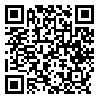BibTeX | RIS | EndNote | Medlars | ProCite | Reference Manager | RefWorks
Send citation to:
URL: http://jcpp.iut.ac.ir/article-1-1472-en.html
In
order to evaluate the effect of seed priming on salinity modification of
safflower (cv. Goldasht), a hydroponic experiment was conducted at Research
Greenhouse of Vali-e-Asr University of Rafsanjan, Iran, in 2009. Priming
treatments at 4 levels (no priming as control, and priming with distilled
water, NaCl and Ca(NO3)2 for 24 hours) and salinity
treatments at 4 levels (0, 8, 16 and 24 dS/m) were considered in a factorial
experiment, based on complete randomized blocks design, with 4 replications. Results showed that
chlorophyll content and K was significantly decreased with increasing salinity,
while, proline, Na and Mg contents were increased with increasing salinity.
Seed priming affected proline and Na contents and K/Na ratio significantly. The
highest proline content (1.98 µmol/g fresh-leaf weight) was observed in NaCl pretreatment. The lowest
Na (0.6%) and the highest K/Na (1.79) were observed in control and priming with
Ca(NO3)2, respectively. Crop growth rate was
reduced by 25, 33 and 55 percent in 8, 16 and 24 dS/m salinity levels,
respectively, compared with control. It was concluded that proline and sugar
content in shoots of this safflower cultivar increased in response to salinity,
and seed priming with NaCl could modify salinity effects, especially net
assimilation rate.
| Rights and permissions | |
 | This work is licensed under a Creative Commons Attribution-NonCommercial 4.0 International License. |






